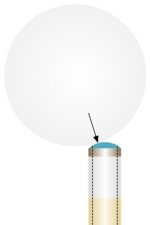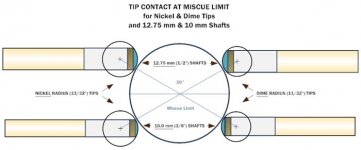Tip size is a hot AzB topic - we seem to think it matters. Here's a scale drawing (zoomed in to ~twice actual size) showing the relative differences in the normal range of sizes - 11 to 13 mm + a 10 mm snooker tip for comparison. I imagined bigger differences, maybe because of all the discussion about it...
pj
chgo

pj
chgo

Last edited:



